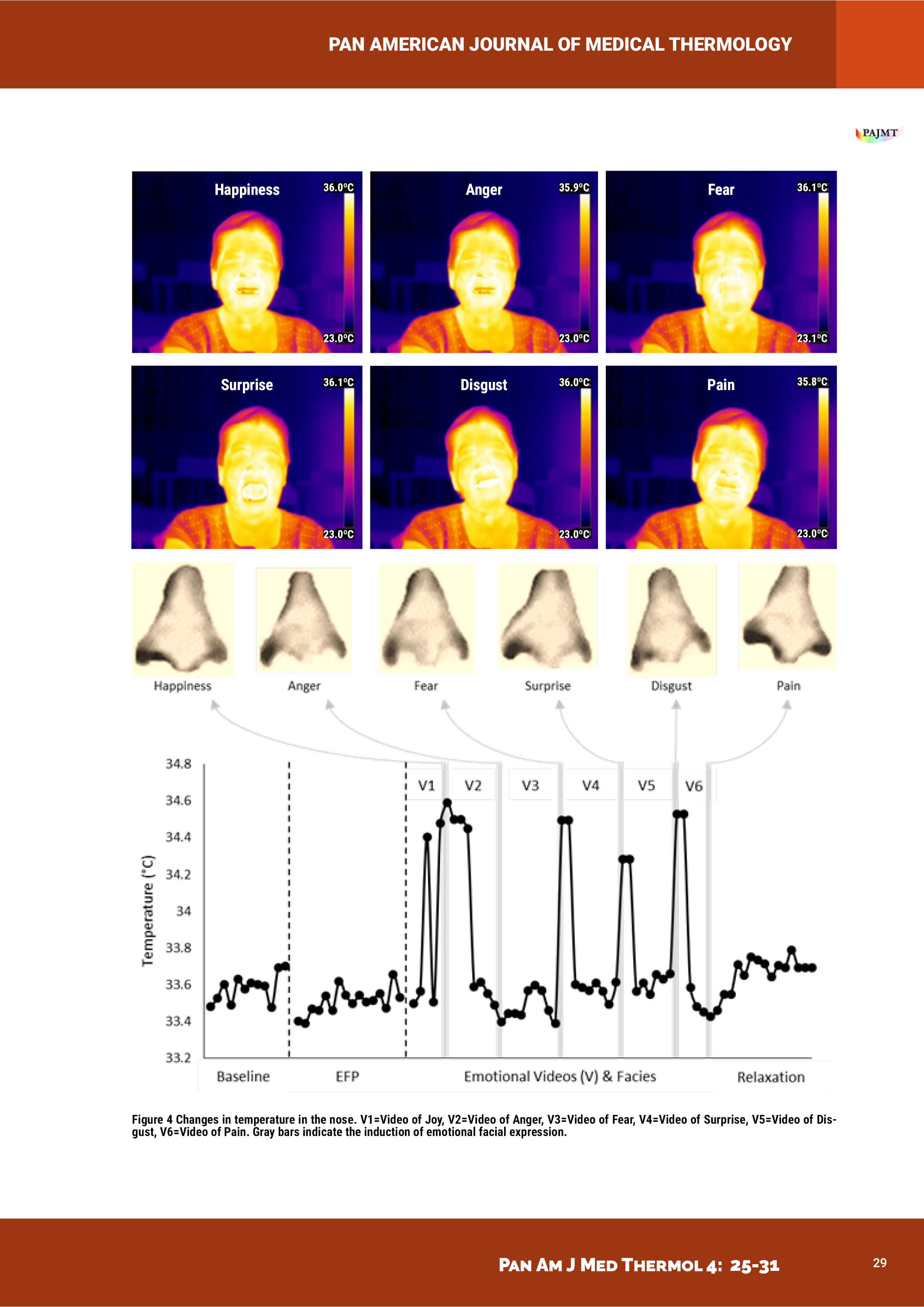Nasal thermal activity during voluntary facial expression in a patient with chronic pain and alexithymia
Resumo
The presence of alexithymia (difficulty in recognizing and expressing emotions and feelings) is one of the psychological factors that has been studied in patients with chronic pain. Different psychological strategies have been used for its management; however, none of them regulates the autonomic activity. We present the case of a 74-year-old female patient diagnosed with rheumatoid arthritis with alexithymia. For twelve years he has been taking pregabalin for pain. The main objective of this case study was to perform a biopsychosocial evaluation of pain (level of interleukin 6 concentration, to evaluate the inflammatory appearance, psychophysiological nasal thermal evaluation and psychosocial measures associated with pain). He was presented videos with affective scenes of various emotions (joy, sadness, fear, pain, anger). The results show that, when the patient observes the videos, there is little nasal thermal variability. However, when facial movements are induced for 10 seconds of a facial expression, a thermal variation is reached around 1 ° C. The induced facial expressions that decrease the temperature are those of anger and pain, which coincide with the priority needs of the patient according to the biopsychosocial profile. The results are discussed in the clinical context of the use of facial expressions to promote autonomic regulation in this population.




